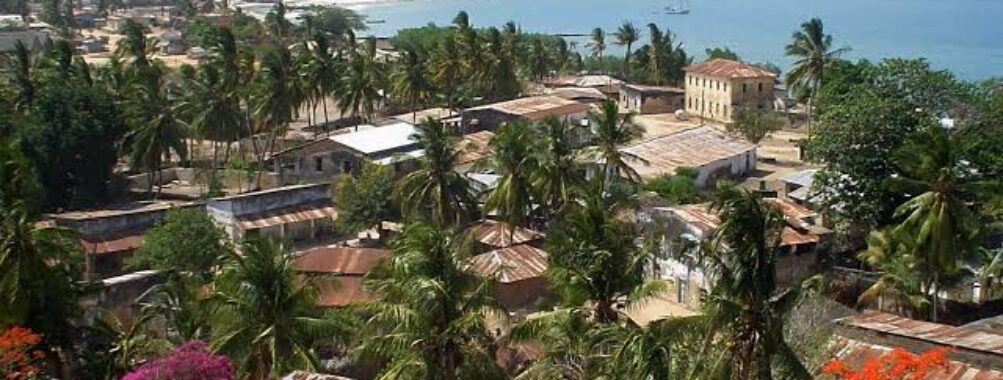
Mtwara
Table of Contents
Description
Mtwara, sitting quietly on Tanzania’s southeastern coast, is one of those places that sneaks up on you. It’s not your usual tourist hotspot crowded with flashy attractions or endless resorts, but that’s exactly what makes it interesting. Originally built in the 1940s as part of the Tanganyika groundnut scheme—a grand but ill-fated agricultural project—the town has a bit of an underdog story vibe. The scheme was abandoned in 1951, leaving Mtwara somewhat forgotten by the big players, but that’s where its charm lies. It’s a place that’s slowly waking up, with a mix of old colonial-era architecture and the buzz of a working port city.
You won’t find the typical tourist traps here. Instead, Mtwara offers a glimpse into authentic coastal Tanzanian life, with its laid-back beaches, bustling markets, and friendly locals who are always up for a chat or sharing a story over a cup of chai. The city’s location on the Indian Ocean means seafood is a big deal here—fresh, flavorful, and straight from the ocean to your plate. And if you’re into off-the-beaten-path adventures, Mtwara’s surrounding areas offer some hidden gems like remote fishing villages and untouched beaches where you can really unwind without a crowd in sight.
One thing that stuck with me was how the town felt like a bridge between history and the present. You can still see remnants of the ambitious groundnut scheme in the layout and some old buildings, but there’s also a palpable sense of new energy as infrastructure slowly improves. It’s not polished, and it doesn’t try to be. That rawness, that realness, is what makes Mtwara stand out for travelers who want more than just a postcard-perfect scene.
Key Features
- Quiet, less touristy coastal city with authentic Tanzanian culture
- Historical significance tied to the Tanganyika groundnut scheme
- Access to pristine, uncrowded beaches perfect for relaxation and swimming
- Fresh seafood markets offering a true taste of the Indian Ocean coast
- Working port with vibrant local trade and fishing activities
- Close proximity to remote villages and natural landscapes for day trips
- Warm, welcoming locals who add to the city’s charm
- Opportunities for cultural immersion and experiencing everyday life away from tourist hubs
Best Time to Visit
If you’re planning a trip to Mtwara, you’ll want to aim for the dry season, which runs roughly from late June through October. This is when the weather is at its most pleasant—warm but not too hot, and with minimal rain to mess up your beach days or outdoor explorations. The humidity drops a bit, making it overall more comfortable for wandering around town or heading out on a boat trip.
The months between November and April bring the long rains, and while the landscape turns lush and green, it can be a bit of a challenge to get around. Roads might get muddy, and some smaller villages could be harder to reach. But hey, if you don’t mind a bit of adventure and the occasional downpour, the off-season has its own quiet beauty and fewer visitors.
How to Get There
Getting to Mtwara isn’t exactly a walk in the park, but that’s part of its appeal. Most travelers fly in via Mtwara Airport, which has connections to Dar es Salaam and a few other regional hubs. The flights aren’t super frequent, so booking ahead is a smart move, especially during the dry season.
If you’re feeling more adventurous (or on a tighter budget), there’s the option of a long-distance bus or dala-dala (shared minibus) from Dar es Salaam. It’s a long haul—think 12 to 15 hours on the road—but you’ll get a real feel for Tanzania’s countryside and coastal landscapes along the way. Just be prepared for a bumpy ride and bring snacks!
Once in Mtwara, getting around is pretty straightforward. Bajaj (three-wheeled taxis) are everywhere and cheap, perfect for short trips around town. Walking is also a great way to soak in the local vibe, especially in the market areas and along the waterfront.
Tips for Visiting
First off, don’t expect luxury resorts or flashy nightlife here. Mtwara is more about slowing down and soaking up the atmosphere. Pack light, breathable clothes, and definitely bring sunscreen and insect repellent—those coastal evenings can get buggy.
Try to learn a few basic Swahili phrases before you go. The locals appreciate it, and it opens up more genuine interactions. And speaking of locals, don’t be shy to accept invitations to share a meal or join community events if you get the chance. That’s where the real magic happens.
Also, cash is king here. ATMs can be scarce outside the main town, so carry enough Tanzanian shillings for your daily expenses. Credit cards aren’t widely accepted, especially in smaller shops or markets.
For food lovers, dive into the seafood—grilled fish, prawns, and octopus are often cooked right on the beach. But if you’re not used to spicy food, maybe ask for a milder version. Tanzanian coastal cuisine can pack a punch!
Lastly, if you want to explore beyond the city, consider hiring a local guide. They know the hidden spots and can navigate the less-traveled paths, making your trip safer and way more interesting. Plus, it supports the community directly.
In short, Mtwara isn’t for everyone, but if you’re the kind of traveler who loves stories, history, and a bit of unpredictability, this little coastal city will surprise you in the best ways.
Location
Places to Stay Near Mtwara
Find and Book a Tour
Explore More Travel Guides
No reviews found! Be the first to review!